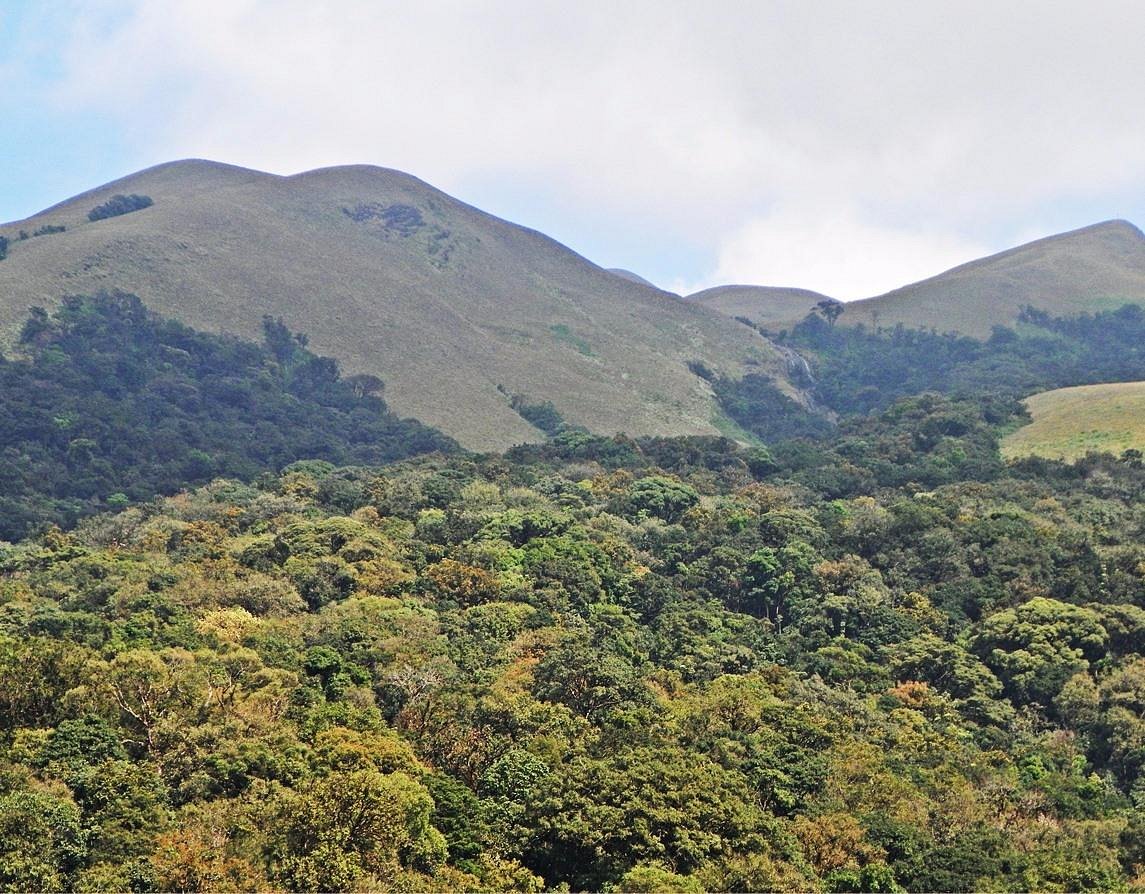Explore Panna in Comfort: Curated Luxury Jungle Escapes
Overview: Explore the wild beauty of Panna National Park while staying in some of Central India’s most enchanting

The connection between humans and nature has always been deeply ingrained, with forests serving as sanctuaries for spiritual and physical rejuvenation. In ancient Hindu tradition, the concept of ‘Vanaprashtha’ is one of the four stages of life, where individuals are encouraged to give up worldly attachments and retreat into the wilderness. This phase was dedicated to meditation, worship, and self-healing. It was believed that the forests provided a holistic space to reconnect with the divine and attain inner peace, away from the distractions of the material world. The idea was not to be powerful, but to simply be in tune with nature and the cosmos. For our ancestors, returning to nature was considered the ultimate form of existence, offering a sanctuary for reflection, rejuvenation, and spiritual growth.
The tradition of retreating to the forests is not merely a thing of the past. The importance of nature’s healing powers has been rediscovered in modern times, with people seeking solace in the tranquility of the wilderness. A historic example of this is the story of Gautama Buddha, who found enlightenment while meditating under a Peepal tree in the deep recesses of the forest. His dedication to seeking wisdom in nature set the foundation for Buddhism and inspired countless individuals to find solace and clarity in the natural world.
Today, the practice of eco-therapy has gained significant attention. This modern-day retreat into nature allows individuals to heal emotionally, mentally, and physically, offering an antidote to the stress and burnout of urban life. The growing popularity of wildlife safaris, such as those offered by Wild Earth Safari, reflects this shift. A safari allows city dwellers to leave behind the hustle and bustle of their daily routines and immerse themselves in the peaceful embrace of nature. Whether it’s the serenity of a jungle walk or the rejuvenating experience of spending time in a forest, these moments of calm provide much-needed rest for the soul.
In contrast to the traditional spiritual pursuits of our ancestors, today’s retreats may not involve long periods of solitude. Modern life often demands quicker, more accessible solutions, which is why short getaways have replaced the long-term spiritual quests of the past. A weeklong safari with Wild Earth Safari offers the perfect opportunity for a quick escape into nature, allowing individuals to unwind, reconnect, and heal. Even a simple walk through a forest or a grassy meadow has been shown to reduce depression, lower stress levels, and boost metabolism, providing an immediate sense of well-being.

One of the primary reasons why forest retreats, and particularly wildlife safaris, have become so popular today is the therapeutic effects they have on our mental and emotional health. Nature is a powerful healer, offering a serene environment that can help reduce anxiety, clear the mind, and promote a sense of inner peace. With Wild Earth Safari, guests can experience firsthand the profound impact that nature has on our overall well-being. The sight of majestic tigers, the sounds of birds in the distance, and the gentle rustle of leaves create an atmosphere of tranquility that modern city life often lacks.
The benefits of spending time in nature are scientifically proven. Nature not only helps with emotional rejuvenation but also contributes to physical health by improving air quality and providing an escape from the artificial environment of cities. For many, a safari offers a chance to disconnect from technology, forget about deadlines, and rediscover the simple joys of life. Whether it’s the thrill of spotting a tiger or the calm of sitting beside a river, these experiences allow individuals to return to a more authentic and grounded way of being.
While the ancient practice of retreating into the forest for spiritual reasons may seem far removed from today’s fast-paced lifestyle, the essence of these traditions still holds true. Modern wildlife safaris, such as those offered by Wild Earth Safari, provide a unique opportunity to reconnect with nature, offering an experience that is both rejuvenating and transformative. The concept of a “wildlife safari” has evolved, but its core mission remains the same: to provide a space for people to find peace and clarity in the presence of nature.
A safari is more than just an adventure; it is a journey into the soul of nature. By engaging with the wild in a respectful and mindful way, participants not only contribute to conservation efforts but also experience the profound impact of being surrounded by nature’s raw beauty. These experiences, whether through wildlife sightings, forest walks, or simply sitting in the wilderness, offer a moment of stillness that can be life-changing.

The mission of Wild Earth Safari goes beyond providing an exciting adventure in nature; it is deeply rooted in the principles of conservation. With a commitment to preserving wildlife and supporting local communities, Wild Earth Safari believes that sustainable tourism can play a key role in the protection of endangered species, such as tigers. The company’s founder, Sharad Vats, draws inspiration from his own experiences with wildlife and the lessons he has learned from observing tigers in the wild. Just as the tiger symbolizes strength, resilience, and leadership, these qualities are also essential in the world of conservation and business.
Sharad’s passion for wildlife led him to establish Nature Safari India Pvt Ltd, with the aim of promoting conservation through tourism. His efforts have resulted in the creation of one of India’s premier jungle lodges in Kanha National Park, where guests can experience the wilderness in its most pristine form. The lodge offers not just a chance to view tigers and other wildlife but also an opportunity to engage in meaningful conservation efforts. Guests who visit Wild Earth Safari contribute to preserving the very ecosystems they enjoy, ensuring that future generations can experience the beauty of India’s forests and wildlife.
Sharad Vats believes that there are many lessons to be learned from the tiger, which can be applied to both leadership and life. The tiger embodies qualities such as determination, focus, and courage—traits that are essential for success in any field. By observing these magnificent creatures, one can gain insights into leadership, resilience, and the ability to face challenges with grace and strength. These lessons, whether in business or in life, can help individuals navigate the complexities of the modern world.
Sharad’s own journey as an entrepreneur and wildlife enthusiast has been shaped by these principles. His work in conservation, combined with his experiences in leadership, has led to the creation of a successful company that is not only focused on business but also on making a positive impact on the environment. For Sharad, the tiger represents the spirit of resilience and leadership, a symbol of the strength required to overcome obstacles and achieve one’s goals.
The call of the wild has never been more urgent. As modern life becomes increasingly stressful, the need for nature’s healing touch becomes clearer. A safari with Wild Earth Safari offers the perfect retreat to rejuvenate, reconnect, and find peace in the natural world. Just as our ancestors sought wisdom in the forests, we too can find solace in the untouched wilderness. By embracing eco-tourism and supporting conservation efforts, we can ensure that the beauty of nature remains intact for generations to come. Let the forest be your sanctuary—experience the transformative power of a jungle safari with Wild Earth Safari today.
India is home to a rich diversity of ecosystems, including dense forests, grasslands, and wetlands, which support an incredible array of wildlife species. Wild Earth Safari is part of a broader initiative to preserve this biodiversity and protect endangered species like the Bengal tiger. The country’s commitment to wildlife conservation is evident in its extensive network of national parks and wildlife sanctuaries, which are crucial for sustaining wildlife populations.
India’s tiger safaris offer an exciting and challenging experience for wildlife enthusiasts. Spotting a tiger in the wild is a rare and thrilling occurrence, and the thrill of the chase is a part of the allure of safaris like those at Wild Earth Safari. However, the challenge of tiger safaris lies in the unpredictability of the tiger’s movements and the dense forest terrain, making sightings a truly extraordinary experience.
The best time for a tiger safari in India is during the dry season, typically from October to March, when the tigers are more likely to emerge from the dense forests in search of water. Wild Earth Safari, with its serene lakes and rich wildlife, is a perfect destination for safari enthusiasts looking to witness the majesty of India’s tiger population.
In conclusion, Wild Earth Safari offers an unmatched experience for those seeking a deeper connection with nature and wildlife. Whether you’re a photographer, a wildlife enthusiast, or simply someone in search of tranquility, this sanctuary provides the perfect setting to witness nature’s raw beauty and contribute to the preservation of its most regal inhabitants, the tigers.
Have questions or ready to plan your adventure? Contact us today and our team will help you craft the perfect wildlife experience.